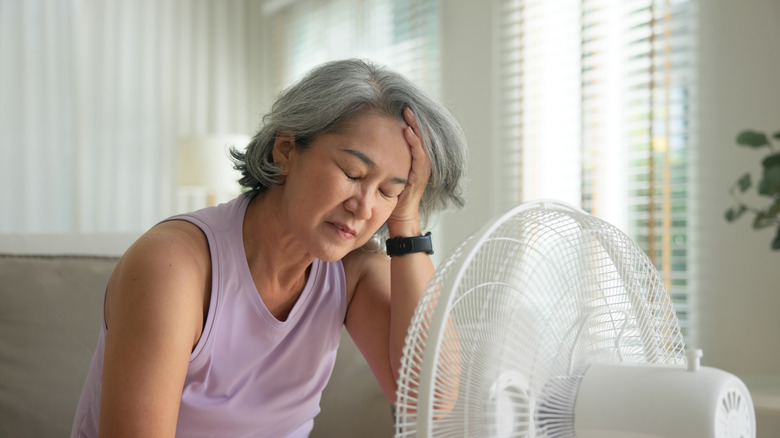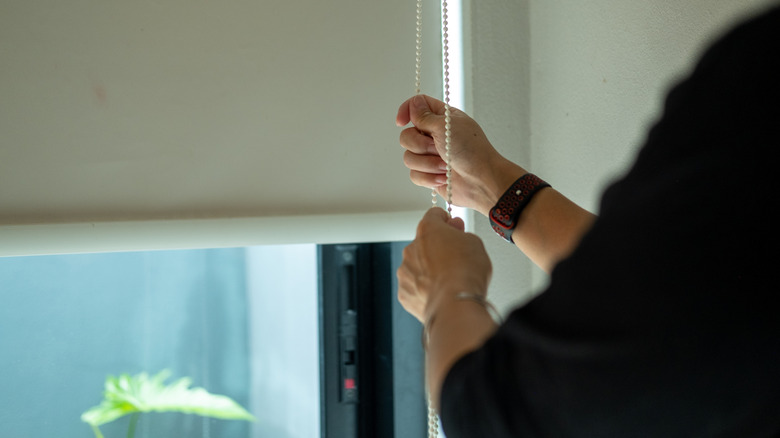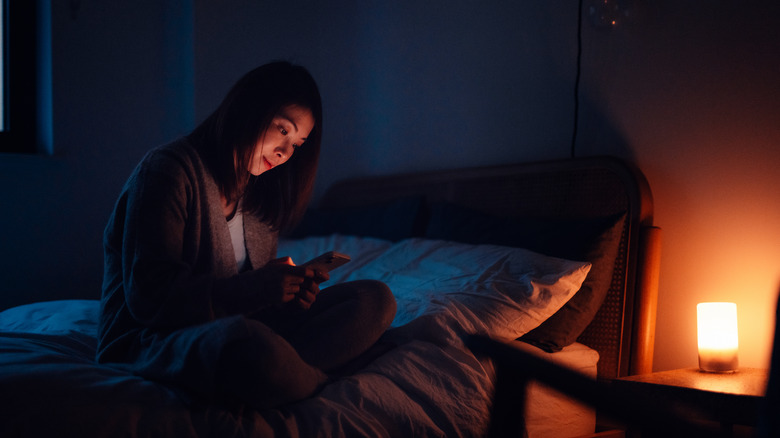What Is The 'Caveman Method' & How Can It Help Keep You Cool In The Heat?
If you feel like every summer keeps getting hotter, you're not going crazy. There is plenty of scientific evidence that confirms it. According to data compiled by NASA, the summer of 2024 was the hottest season ever recorded. While the current year's data won't be evaluated until this summer's conclusion, people in the northern hemisphere have undoubtedly been searching for ways to lower the temperature in their homes as they navigate sweltering heat waves. If you're looking for ways to cool your room without air conditioning, you might be accustomed to opening up your doors and windows to help let in some air. However, some experts note that doing this can actually make your house warmer. Instead, they advocate for the "caveman method," which involves keeping your home as dark and closed off from outside elements as possible. There are some caveats to consider with this method, though.
The word "caveman" likely makes you think about the dark caves that ancient Neanderthals often used for shelter. Unsurprisingly, the "caveman method" gets its name from these basic living arrangements. Thankfully, though, you don't have to forego modern-day comforts like electricity to try it out. The idea here is to find ways to prevent sunlight from entering your home so that it functions more like a cave and stays nice and cool. The method also requires that you do not allow any hot outside air to get in. Collectively, these actions are thought to help keep your home cooler in the event of a heat wave.
Tips for using the caveman method to keep your home cooler
Ultimately, the best way to implement the caveman method is to think of your home as a temporary cave. This means you should avoid opening your windows. If you must step outside, try to close the door behind you quickly to prevent hot air from getting inside. You might also consider keeping the blinds over your windows closed during peak sunlight hours. You may want to pick up some blackout curtains or blackout shades to help block heat from the sun as well.
Aside from limiting external sources of heat from entering your home, you'll also need to evaluate any internal sources that could contribute to making your indoor spaces hotter. For example, consider leaving your lights off as much as possible, especially if you have incandescent or halogen bulbs. You should also consider switching to LEDs, since they are known for producing less heat. This is just one of the many reasons why LEDs are better than regular lightbulbs. Additionally, you can limit heat in your home by switching off certain appliances. For example, try to avoid turning on your oven or using your washer and dryer during the hottest part of the day.
Potential drawbacks of the caveman method
The biggest caveat of the caveman method is, of course, that it makes your home dark. In other words, it may not be ideal for individuals who prefer more natural light in their space. It can also have some negative health implications, too. A lack of natural light can affect your sleep patterns and overall mood. You may be able to help offset these drawbacks by being strategic with the locations of the blinds you open. If you only open them up when the windows behind them are not getting direct sunlight, you can still get some natural light in your home without necessarily heating it up.
Another potential downside of the caveman method is increased humidity levels in your home, especially if you do not have ventilation fans in your bathroom or kitchen. To combat this problem, you may need to temporarily open a window early in the morning or later in the evening to let in some fresh air. Also, know that the caveman method is only intended for temporary use during heat waves, and you aren't expected to follow it all summer long. Though your home may be darker than you prefer for a little while, not having to suffer as much during a heatwave may well make the method worth trying, on a short-term basis.


